
Beech Wood: The Ultimate Guide for Woodworking Enthusiasts

Beech Wood, known for its remarkable strength and versatility, is a popular choice among craftsmen and designers alike. In this guide, we explore Beech Wood. We look at its features, uses, and why it is popular in woodworking and design.
Table of Contents
Comprehensive Characteristics of Beech Wood (Fagus Sylvatica)
Beech Wood, scientifically known as Fagus Sylvatica, is renowned for its fine grain, high durability, and versatile application. Below is a detailed table presenting its key characteristics:
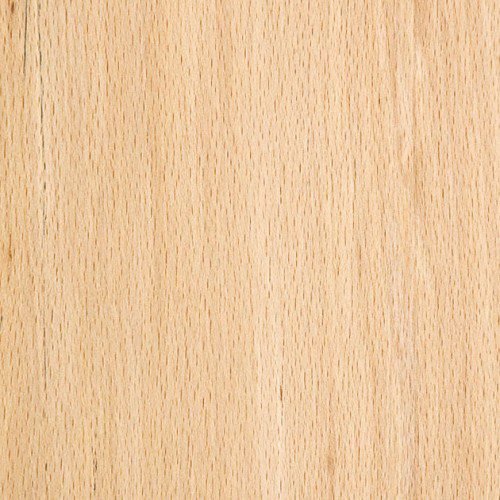
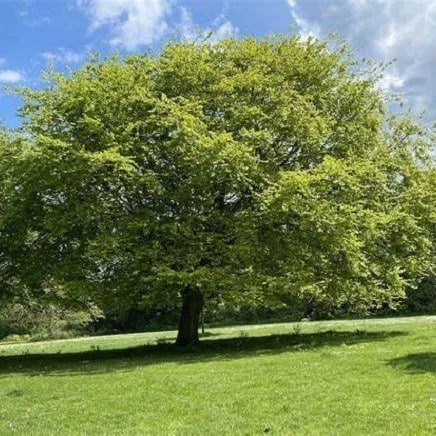
| Characteristic | Detail |
|---|---|
| Common Names | European Beech, Common Beech |
| Scientific Name | Fagus Sylvatica |
| Distribution | Europe, from Sweden to Italy, west to France, Spain, and Portugal |
| Tree Size | 100-120 ft (30-37 m) tall, 3-5 ft (1-1.5 m) trunk diameter |
| Average Dried Weight | 45 lbs/ft³ (720 kg/m³) |
| Specific Gravity (Basic, 12% MC) | .64, .72 |
| Janka Hardness | 1,450 lbf (6,460 N) |
| Modulus of Rupture | 14,300 psi (98.6 MPa) |
| Elastic Modulus | 1,830,000 psi (12.62 GPa) |
| Crushing Strength | 7,230 psi (49.9 MPa) |
| Shrinkage | Radial: 9.5%, Tangential: 16.7%, Volumetric: 15.9%, T/R Ratio: 1.8 |
Beech wood is very strong and durable. This makes it great for heavy use, like furniture and flooring. Its relatively high shrinkage rate, however, necessitates careful drying and conditioning to minimize warping and cracking.
History and Origin of Beech Wood
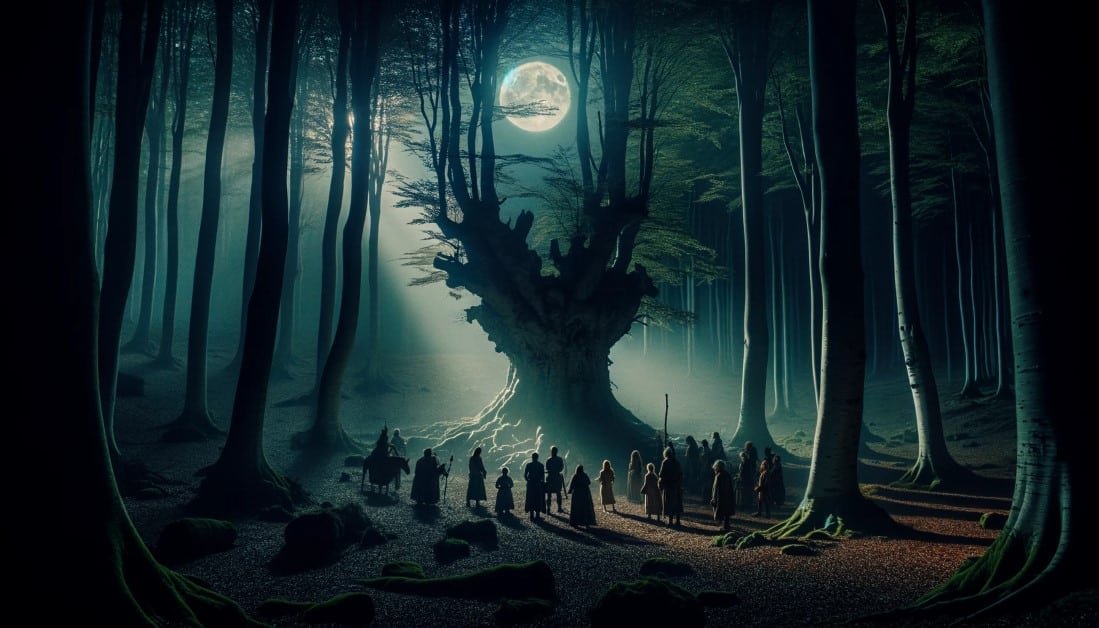
The beech tree, Fagus Sylvatica, is steeped in history and tradition, tracing its origins back to ancient Europe. This section explores the rich historical backdrop and geographical spread of Beech Wood, providing insights into its enduring significance.
Historical Significance
Beech wood has been important in human history. People have used it for many purposes since the Neolithic period. Its wood was chosen for tools, furniture, and construction due to its strength and workability. In folklore, the beech tree is linked to knowledge and wisdom. This is partly because early texts were written on beech wood tablets.
Origins and Natural Habitat
The Beech tree comes from Europe. It grows well in many climates. You can find it in the cool north of Sweden and the warm south of Italy and Spain. Its adaptability to different soil types and climates has contributed to its widespread presence across the continent. The beech tree grows in deciduous forests. It often creates thick canopies. These canopies are important for the ecosystem. They provide homes and food for many species.
Physical and Mechanical Properties
This segment focuses on the tangible aspects that make Beech sought after in woodworking and beyond. From its appearance to its mechanical strengths, these properties are central to its utility and appeal.
Color and Appearance
Freshly cut Beech Wood has a light, pale cream color, sometimes with a pink or brown hue. Over time, it darkens to a deeper reddish-brown, especially when exposed to light. Its even grain and fine texture make it great for furniture and flooring. It gives a smooth finish and a nice look.
Grain and Texture
Beech Wood is known for its straight grain, though it can also exhibit a wavy or interlocked pattern. The texture is usually fine and even. This not only improves its natural beauty but also makes it easier to work with. You can achieve a polished finish without much effort.
Durability and Resistance to Decay
While Beech Wood lumber is hard and strong, its natural resistance to decay is moderate. It is not as strong as some other hardwoods when it gets wet or is outside. This is why it is often used indoors. For increased longevity, Beech items may require treatment or finishes to protect against decay and pests.
Working Properties of Beech Wood
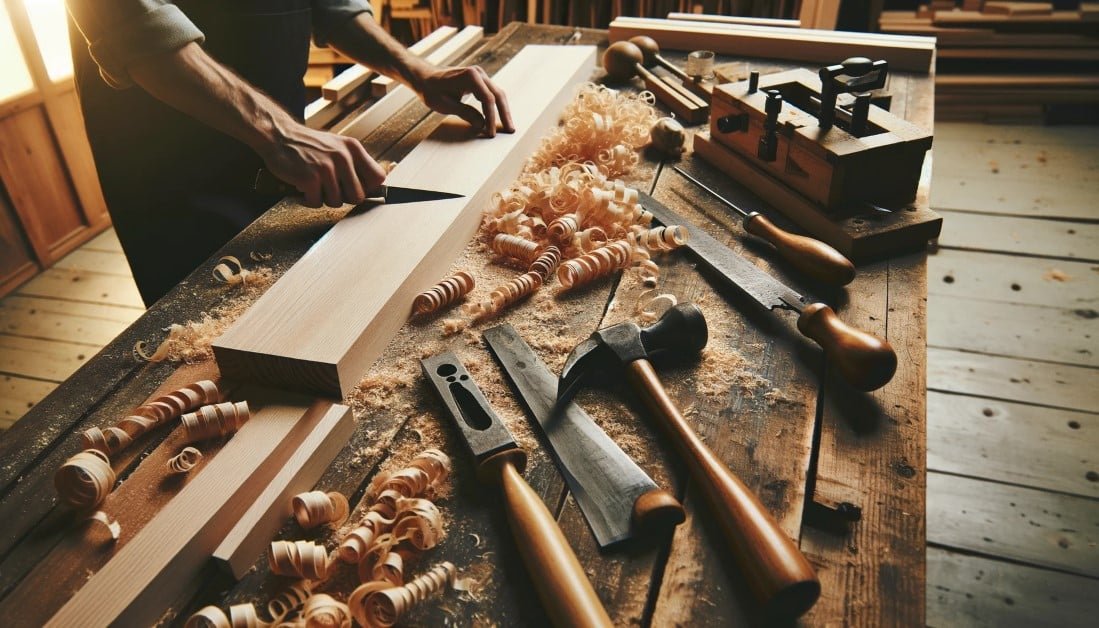
Beech Wood’s workability is a significant factor in its popularity. This section explains its machining, finishing, and workability. It shows why craftsmen and DIY enthusiasts prefer it.
Workability
Beech has a smooth grain and is not too hard. This makes it easy to work with, whether you use hand tools or machines. It holds nails and screws well, and it is conducive to gluing, making it versatile for various projects.
Common Uses in Woodworking
Beech wood is strong and looks good. It is widely used for making furniture, flooring, cabinets, and turned items. Its fine texture and ability to hold detail make it a popular choice for decorative items and detailed designs.
Tips for Machining and Finishing
For the best results with Beech Wood, use sharp tools. This helps prevent tear-out, especially in areas with uneven grain. Prepping the wood before staining can help you get an even finish. This shows off its natural beauty without changing the wood’s color or texture.
Beech Wood lumber in Furniture Making
Beech Wood’s exceptional characteristics make it a premier choice for furniture manufacturing. Its durability, ease of workability, and aesthetic appeal have cemented its status as a favorite among both contemporary and traditional furniture makers.
Advantages for Furniture
Beech wood is strong and hard. This means furniture made from it can handle daily use. It is great for chairs, tables, and bed frames. Its fine grain and easy-to-stain surface allow for many finishes. This caters to different design preferences.
Comparison with Other Woods
When compared to other hardwoods, Beech Wood stands out for its balance of hardness and workability. Unlike oak or maple, which can be harder to work with, Beech is easier to machine. Additionally, its more uniform grain pattern provides a cleaner look, making it a preferred choice for minimalist designs.
Care and Maintenance Tips
To maintain the beauty and longevity of Beech furniture, regular dusting with a soft, dry cloth is recommended. Avoid exposure to excessive moisture and direct sunlight to prevent warping and fading. Using coasters and placemats can help protect the wood’s surface from scratches and stains.
Beech Wood in Flooring and Architectural Uses
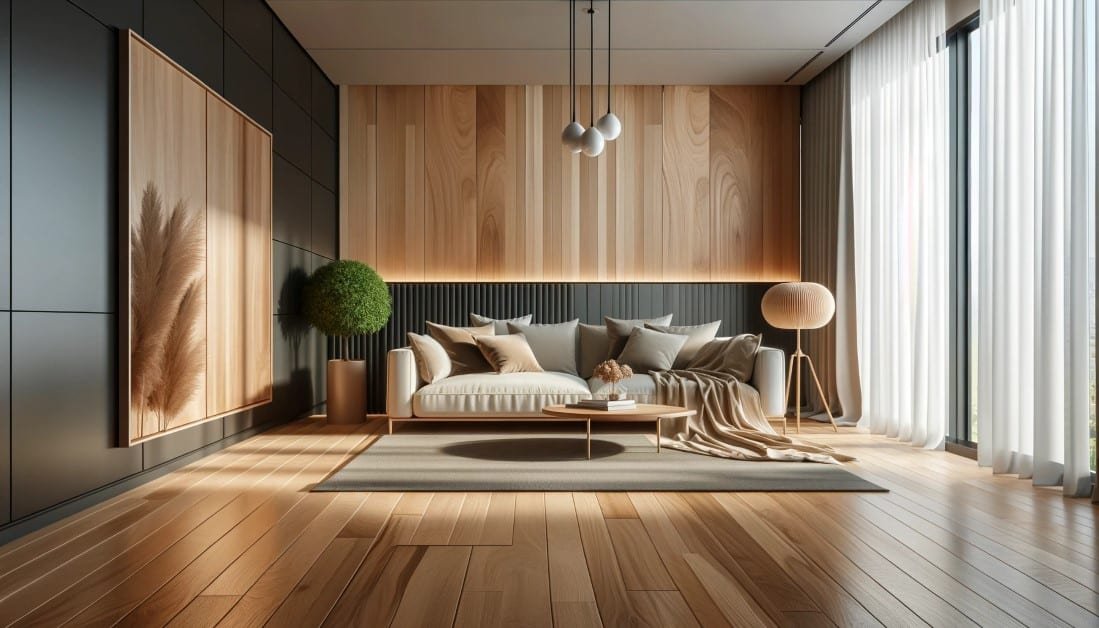
The robust nature of Beech Wood extends its application beyond furniture, making it a valuable material for flooring and architectural details.
Benefits for Flooring
Beech Wood flooring is prized for its hardness, which translates to durability and resistance to wear and tear. Its light colors and soft grain patterns can brighten spaces and add warmth to interiors. This makes it a popular choice for homes and businesses.
Use in Interior Design and Architecture
Beyond flooring, Beech Wood’s versatility is showcased in its use for paneling, moldings, and trim work. Its ability to fit well with different design styles, from rustic to modern, makes it a popular choice. Architects and interior designers use it to create inviting and cohesive spaces.
Environmental Impact and Sustainability

The sustainability of Beech is a growing consideration for consumers and manufacturers alike, reflecting a broader trend towards environmentally responsible material choices.
Eco-friendliness
Beech trees are common in Europe. When taken from sustainably managed forests, Beech wood is an eco-friendly choice. Its ability to be recycled and biodegrade at the end of its lifecycle further minimizes its environmental footprint.
Sustainable Forestry Practices
The cultivation and harvesting of Beech Wood in compliance with sustainable forestry practices ensure the long-term health and availability of beech forests. Certifications such as FSC (Forest Stewardship Council) provide assurance that Beech products are sourced from responsibly managed forests, contributing to the preservation of biodiversity and protection of ecosystems.
Cost and Availability
While the demand for Beech Wood is high, its widespread cultivation across Europe ensures a steady supply, making it relatively affordable compared to some exotic hardwoods.
Market Trends
The price of Beech Wood lumber can vary depending on factors such as quality, size, and the specific needs of a project. However, its overall cost-effectiveness, combined with its desirable properties, continues to make it a popular choice for a wide range of woodworking projects.
Tips for Buying Beech Wood
When purchasing Beech Wood, look for suppliers that adhere to sustainable forestry practices to ensure you’re making an environmentally responsible choice. Inspecting the wood for uniformity in color and grain pattern can also help guarantee the quality of the material for your specific application.
DIY Projects with Beech Wood
Beech Wood’s workability makes it an excellent material for DIY enthusiasts. Its versatility allows for a wide range of projects, from simple crafts to more complex furniture pieces.
Ideas and Inspirations
- Custom Shelving: Utilize the strength and aesthetic appeal of Beech Wood to create durable and stylish shelving units.
- Handmade Cutting Boards: The density and durability of Beech make it ideal for kitchen accessories that withstand daily use.
- Decorative Items: Carve or whittle Beech into intricate decorative items, such as picture frames or candle holders, to add a touch of elegance to any home.
Step-by-Step Guides for Beginners
For those new to working with Beech Wood lumber, starting with simple projects can help build confidence and skills. Online tutorials, woodworking classes, and community workshops can provide valuable guidance and support.
Professional Craftsman and Beech Wood
Professional woodworkers and craftsmen often turn to Beech for its reliability and beauty. Their experiences highlight the wood’s adaptability and performance in a professional setting.
Expert Opinions
Many professionals praise Beech for its fine grain, which not only enhances the appearance of finished pieces but also makes the wood easier to work with. Its consistency allows for precise cuts and a smooth finish, essential qualities in high-end woodworking.
Case Studies of Successful Projects
- Bespoke Furniture: Custom-made Beech Wood lumber furniture pieces that showcase the wood’s natural beauty and durability.
- Architectural Millwork: Use of Beech in detailed millwork projects, demonstrating its versatility in both structural and decorative applications.
Future of Beech Wood in Woodworking and Design
The future looks bright for Beech Wood, as trends in sustainability and natural materials continue to rise. Innovations in wood treatment and processing may further expand its applications.
Innovations
Advancements in technology are making it possible to enhance the natural properties of Beech Wood, such as improving its resistance to moisture and pests, thereby broadening its use in outdoor and high-humidity environments.
Trends and Forecasts
As the design world increasingly values sustainability and the charm of natural materials, Beech Wood is poised to become even more popular. Its balance of durability, workability, and aesthetic appeal aligns with the growing demand for quality and eco-friendly materials in furniture and interior design.
Summary and Conclusion
Beech wood has a rich history and many great features. It is a popular choice for woodworking and design projects. Beech wood is a great choice for craftsmen, DIY lovers, and sustainable design. It combines beauty, strength, and ease of use. Its future in the industry looks promising, with ongoing innovations and a strong focus on sustainability further enhancing its appeal and utility.
As we continue to explore the potential of Beech Wood, we invite you to revisit our homepage for more insights and inspiration, or visit our store to start your next project.
FAQs
-
What is Beech Wood used for?
Beech wood is known for its strength and flexibility. This makes it a popular choice for many uses. It is commonly used in the manufacture of furniture, flooring, kitchen utensils, and cutting boards due to its hardness and wear resistance. Additionally, Beech is utilized in the production of plywood, veneers, and even in the crafting of musical instruments, showcasing its broad utility in both functional and decorative contexts.
-
What does a Beech Tree look like?

The Beech Tree (Fagus Sylvatica) is a large, deciduous tree, reaching heights of up to 100-120 feet (30-37 meters) with a trunk diameter of 3-5 feet (1-1.5 meters). It has a broad, spreading canopy that provides dense shade. The leaves are simple, with a distinctive wavy edge, and turn a vibrant yellow to golden brown in the fall. The smooth, grey bark of the Beech Tree is another characteristic feature that makes it easily recognizable.
-
What color is Beech Wood?
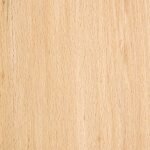
Freshly cut Beech Wood typically presents a light, pale cream color, sometimes with a pink or brown hue. As it ages or when exposed to sunlight, it deepens to a richer, reddish-brown. The wood’s fine grain and smooth texture contribute to its natural beauty, making it highly valued for interior design and aesthetic applications.
-
What do Beech Nuts look like?

Beech Nuts are small, triangular nuts enclosed in a soft, spiky husk. The nuts themselves are brown, shiny, and approximately the size of a small pea. Each husk contains two to four nuts, which mature in the fall. Beech Nuts are not only a source of food for wildlife but have also been used in human cuisine, offering a sweet, edible seed that is rich in fat and protein.



Stop using AI. It makes shitty images! I’m a human being and I prefer to trust content that wasn’t synthesized, especially when I am evaluating wood types.
Yes, you’re right. We won’t use it next time.